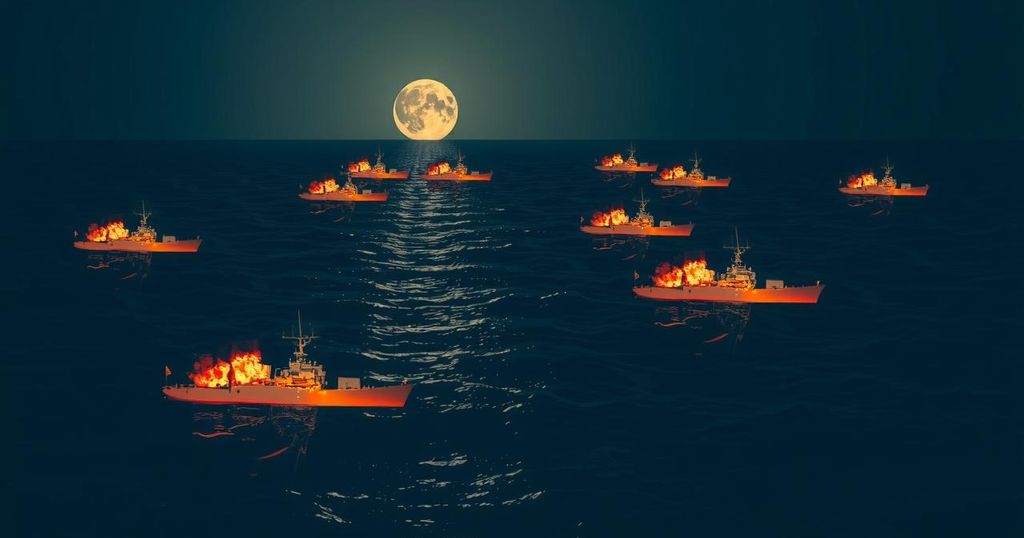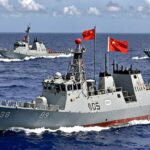China’s Aggressive Moves and Rising Tensions in the South China Sea
Summary
China’s coast guard has increased its aggressive tactics in the South China Sea, leading to multiple confrontations with Philippine vessels, causing damage and injuries. The focus has shifted to Sabina Shoal, within the Philippine exclusive economic zone, valued for its natural resources. With China asserting its dominance, the Philippines under President Marcos has adopted a more assertive stance, reinforcing alliances with the United States amidst fears of heightened tensions and confrontation.
China has intensified its aggressive tactics in the South China Sea, particularly against Philippine vessels, marking an escalation in territorial disputes in this strategically significant area. The Chinese coast guard has engaged in confrontations with Philippine boats, employing techniques such as ramming, using water cannons, and flashing high-powered laser beams towards Filipino troops. Such confrontations have resulted in physical damage to Philippine vessels and injuries to personnel, raising concerns about a potential superpower conflict in the region. The recent focus of these tensions has shifted to Sabina Shoal, an unoccupied atoll within the Philippine exclusive economic zone and approximately 86 miles from the Philippine mainland. The area is of strategic importance to the Philippines due to its rich natural resources and critical maritime routes. Government officials and maritime experts emphasize the need to safeguard this territory from potential Chinese encroachment. Manila’s deployment of its coast guard ship, the Teresa Magbanua, to the Sabina Shoal aims to assert its claims against perceived Chinese expansion efforts, particularly in light of evidence of suspected land reclamation activities. China has traditionally maintained that its actions are in defense of its sovereignty, dismissing a 2016 international tribunal ruling that invalidated its expansive claims in the South China Sea. Beijing’s rhetoric includes accusations against the Philippines of attempting to permanently occupy contested areas. The tensions have recently included the previously noted incidents of physical harassment, wherein Chinese forces utilized various aggressive measures that escalated into actual confrontations. Despite the Philippines returning its coast guard vessel to port after sustaining damage from a collision, President Ferdinand R. Marcos Jr.’s administration has adopted a more assertive stance against Chinese activities than previous administrations. The Philippines has reinforced its alliance with the United States and has been more transparent regarding its maritime operations to mitigate China’s aggressions. Both nations are currently in a precarious situation, with escalating maritime confrontations likely continuing given China’s resolute stance on its territorial ambitions. The growing assertiveness of the Chinese navy is coupled with an increase in the number of confrontational encounters, prompting significant concern among regional analysts about the potential for confrontation. The United States, in response to these developments, has engaged in limited military dialogues with China, encouraging de-escalation but also reaffirming its commitment to regional stability in the face of Chinese aggression.
The South China Sea is a vital maritime region with significant geopolitical importance, rich in natural resources and crucial trade routes. China’s assertive claims, which encompass almost the entire sea area, have led to ongoing disputes with several neighboring countries, particularly the Philippines. Tensions have been exacerbated by China’s island-building endeavors and militarization of the area, which have often brought it into direct conflict with U.S. treaty allies. The Philippines, having historical ties with the United States, is facing increasing pressure from China as both nations navigate complex maritime claims and military posturing.
In conclusion, China’s aggressive maritime tactics in the South China Sea pose significant challenges to regional stability, particularly with respect to the Philippines. As confrontations become more frequent and intense, the implications for diplomatic relations and potential military engagement hang in a delicate balance. The Philippines’ strategic response, guided by stronger alliances and a commitment to territorial integrity, will be crucial in shaping the future dynamics of the region. Continuous vigilance and international support will be essential in countering China’s expansive maritime claims and ensuring the protection of vital sea routes.
Original Source: www.nytimes.com








Post Comment